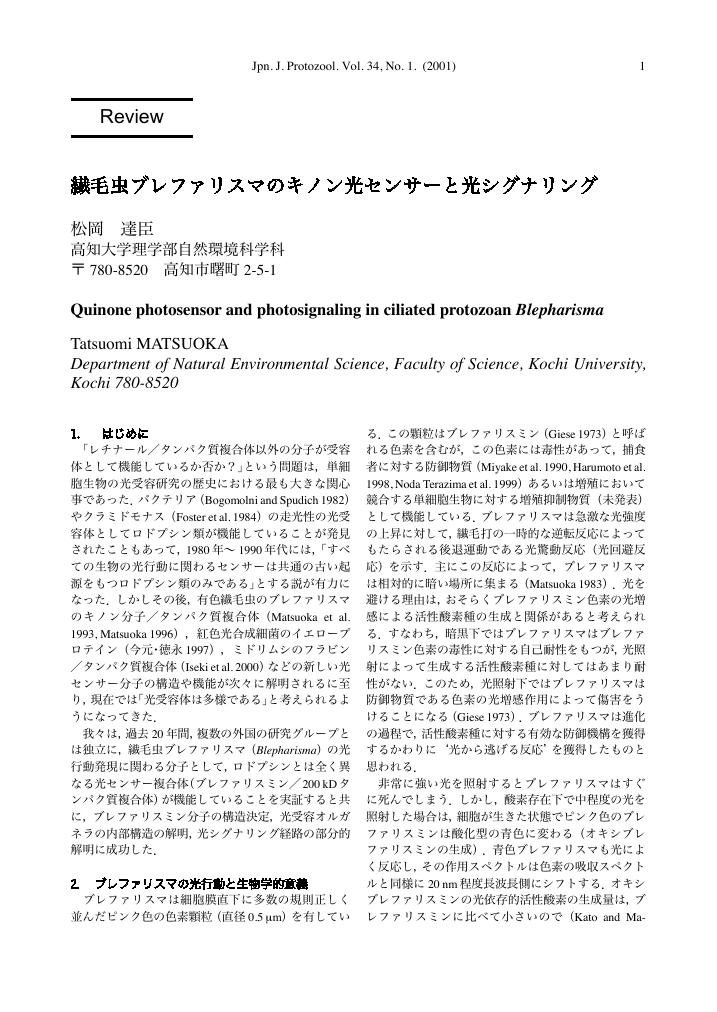5 0 0 0 OA 微生物生態系における細菌の遺伝子水平伝播現象
- 著者
- 松井 一彰
- 出版者
- 日本原生生物学会
- 雑誌
- 原生動物学雑誌 (ISSN:03883752)
- 巻号頁・発行日
- vol.48, no.1-2, pp.31-43, 2015 (Released:2016-08-01)
- 参考文献数
- 100
- 被引用文献数
- 1
Horizontal gene transfer (HGT) plays an important role in bacterial evolution and the exchange of genetic material between different species and genera. Recently, whole genome analysis demonstrated that HGT also played an important role in the diversification of all three domains of organisms. Bacterial HGTs are mediated by one of three mechanisms: transformation, conjugation, or transduction. In addition to these distinct mechanisms, gene transfer agent (GTA) or membrane vesicles (MV) mediate a transduction-like process that has been reported as an alternative HGT process. The occurrence of HGT has been confirmed by both laboratory and field studies. Both biotic and abiotic parameters affect the success of gene transfer events in natural environments. However, the frequency and the role of HGT in natural environments are currently not well understood due to the difficult nature of defining the experimental conditions required in order to elucidate this important parameter in HGT events. This knowledge will help in the estimation of the emergence of antibiotic resistance genes among bacteria and the potential consequences of the environmental usage of genetically modified bacteria for bioremediation purposes. The aim of this review was to summarize the brief history of HGT and the biotic factors that may affect the frequency of HGT in the ecosystem.
1 0 0 0 OA ツリガネムシ類とそのCa2+駆動収縮性スパズモネーム
1 0 0 0 OA 赤内型マラリア原虫感染における防御免疫機構—γδ T細胞の役割—
- 著者
- 小林 富美惠 井上 信一
- 出版者
- 日本原生生物学会
- 雑誌
- 原生動物学雑誌 (ISSN:03883752)
- 巻号頁・発行日
- pp.JJP17-01, (Released:2017-12-01)
- 参考文献数
- 62
Malaria remains one of the most serious infectious diseases with the high morbidity and mortality among children in the world. Malaria is caused by protozoan parasites of genus Plasmodium.An efficient vaccine for malaria has not successfully developed for the eradication yet. Thus, to support malaria vaccine development, we have to uncover the mechanisms for protective immunity against Plasmodium infection. We have clarified γδ T cell-related protective immunity against erythrocytic stages of malaria parasites by using low virulent Plasmodium berghei-infected mice. Here we summarize recent advances, including our studies, in understanding mechanisms of immune response to erythrocytic stages of Plasmodium infection.
- 著者
- 中山 卓郎 石田 健一郎
- 出版者
- 日本原生生物学会
- 雑誌
- 原生動物学雑誌 (ISSN:03883752)
- 巻号頁・発行日
- vol.41, no.1, pp.27-31, 2008
<p>It is widely believed that all known plastids originated from a single primary endosymbiosis in which a cyanobacterium was engulfed and retained by a heterotrophic protist. However, there is an interesting organism called <i>Paulinella chromatophora</i> that may change this widely accepted view.</p><p><i>P. chromatophora</i>, a cercozoan protist, is a fresh water testate amoeba that contains two cyanobacterium-like structures called "cyanelles" in the cell. Past researches have failed to cultivate the cyanelles separately from the host cells and demonstrated that the cyanelles divided within the host cells and were handed over to daughter cells. In recent studies, it has been revealed that the cyanelle of <i>P. chromatophora</i> does not share a common ancestor with known plastids but originated from a cyanobacterium that belongs to the <i>Synechococcus/Prochlorococcus</i> lineage.</p><p>These situation led the idea that <i>P. chromatophora</i> represent the second example of the primary endosymbiosis that is in progress. Further study on the symbiotic relationship between the cyanelles and the host seen in this organism would provide important insight for the mechanism of primary plastid acquisition.</p>
1 0 0 0 OA 繊毛虫ブレファリスマのキノン光センサーと光シグナリング
- 著者
- 松岡 達臣
- 出版者
- 日本原生生物学会
- 雑誌
- 原生動物学雑誌 (ISSN:03883752)
- 巻号頁・発行日
- vol.34, no.1, pp.1-6, 2001 (Released:2018-08-05)
- 参考文献数
- 26
1 0 0 0 OA シロアリ腸内原生生物と原核生物の細胞共生
- 著者
- 本郷 裕一
- 出版者
- 日本原生生物学会
- 雑誌
- 原生動物学雑誌 (ISSN:03883752)
- 巻号頁・発行日
- vol.44, no.2, pp.115-129, 2011 (Released:2016-08-01)
- 参考文献数
- 87
1 0 0 0 OA 原生生物画像データベースの現状と将来展望
- 著者
- 月井 雄二
- 出版者
- 日本原生生物学会
- 雑誌
- 原生動物学雑誌 (ISSN:03883752)
- 巻号頁・発行日
- vol.41, no.2, pp.101-115, 2008 (Released:2017-09-09)
- 参考文献数
- 25
1 0 0 0 OA もう一つの一次共生?―Paulinella chromatophora とそのシアネレ―
- 著者
- 中山 卓郎 石田 健一郎
- 出版者
- 日本原生生物学会
- 雑誌
- 原生動物学雑誌 (ISSN:03883752)
- 巻号頁・発行日
- vol.41, no.1, pp.27-31, 2008 (Released:2017-09-09)
- 参考文献数
- 21
It is widely believed that all known plastids originated from a single primary endosymbiosis in which a cyanobacterium was engulfed and retained by a heterotrophic protist. However, there is an interesting organism called Paulinella chromatophora that may change this widely accepted view.P. chromatophora, a cercozoan protist, is a fresh water testate amoeba that contains two cyanobacterium-like structures called “cyanelles” in the cell. Past researches have failed to cultivate the cyanelles separately from the host cells and demonstrated that the cyanelles divided within the host cells and were handed over to daughter cells. In recent studies, it has been revealed that the cyanelle of P. chromatophora does not share a common ancestor with known plastids but originated from a cyanobacterium that belongs to the Synechococcus/Prochlorococcus lineage.These situation led the idea that P. chromatophora represent the second example of the primary endosymbiosis that is in progress. Further study on the symbiotic relationship between the cyanelles and the host seen in this organism would provide important insight for the mechanism of primary plastid acquisition.



